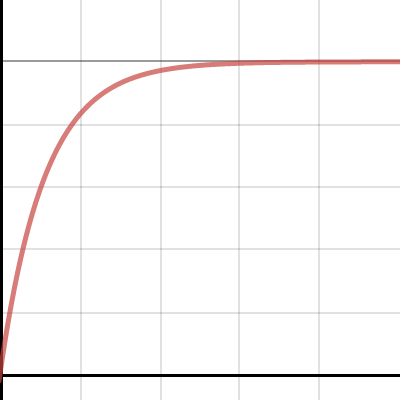Ask Uncle Colin: Finding a curve with an asymptote
Dear Uncle Colin,
I’m looking for the equation of a curve that goes through the points $\left(10, \frac{1}{64}\right)$ and $\left(100, \frac{1}{32} \right)$, as – as $x$ gets large – approaches 1. How do I go about it?
Always Silence Your Mobile Phone Typing Out Tricky Equations
Good advice, ASYMPTOTE! And a great question.
There are infinitely many curves that fit the bill, but the one that jumps out at me is of the form $y = 1 - Ae^{-kx}$. From here, it’s ‘simply’ a case of working out $A$ and $k$.
We have two equations:
$\frac{1}{64} = 1 - Ae^{-10k}$
$\frac{1}{32} = 1 - Ae^{-100k}$
A little rearrangement to make them (slightly) nicer gives:
$\frac{64}{63} = Ae^{10k}$
$\frac{32}{31} = Ae^{100k}$
Dividing these gives
$\frac{32 \times 63}{31 \times 64} = e^{90k}$
With a quick cancel and a logarithm:
$\frac{1}{90}\ln\left(\frac{63}{62}\right) = k$.
We can substitute this back into one of the earlier equations to find $A$:
$\frac{64}{63} = A e^{-\frac{1}{9} \ln\left(\frac{63}{62}\right)}$
Simplify the exponential:
$\frac{64}{63} = A \left(\frac{63}{62}\right)^{-\frac 19}$
And Bob’s your uncle:
$\frac{64}{63} \left(\frac{63}{62}\right)^{\frac 19}= A $
Here’s what it looks like (click to see details):
Hope that helps!
-- Uncle Colin
